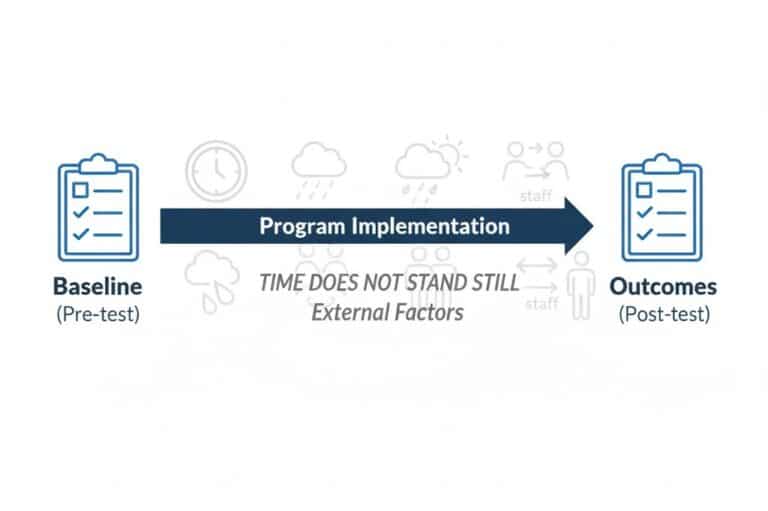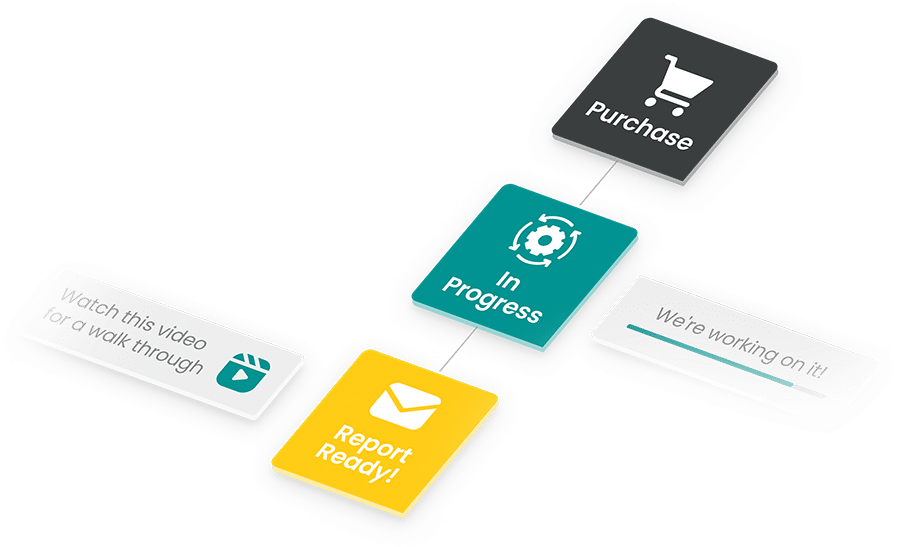In EdTech, speed is everything. You build fast. You ship fast. You tweak, iterate, and improve faster still. But here’s the problem: traditional evaluation methods? They’re still crawling.
By the time a year-long study wraps up, your product’s already on its third update, your pilot district has rolled out five new tools, and the funding you were counting on is long gone. It’s like trying to prove you ran a great race with a photo taken three towns back.
That’s where rapid-cycle educational impact evaluations come in. They’re not some watered-down version of “real” research. They’re streamlined, smart, and designed to move at the speed of classrooms, not conference papers. If you’re an EdTech leader trying to show results, secure renewals, or stand out from a sea of lookalike platforms, this might be the most important shift you make this year.
Let’s break down what rapid-cycle evaluation actually means, and why it’s become a must-have for anyone selling to schools today.
What Is Rapid-Cycle Evaluation in Education?

Before we dive in, let’s get one thing clear: this is not your typical evaluation process. We’re not talking about six months of surveys, ten-page logic models, or dashboards that require a PhD to interpret. A rapid-cycle evaluation is exactly what it sounds like: fast, focused, and built to give you useful answers while they still matter.
Think weeks, not semesters. Think existing district data, not a mountain of new forms. Think: “We’ll tell you if your program is working before the next budget cycle hits.”
At its core, a rapid-cycle educational impact evaluation does three things:
- It moves quickly. Most evaluations wrap in a matter of weeks, giving you real-time feedback on your product’s performance without holding up your roadmap.
- It uses what’s already there. Districts already track attendance, behavior, grades, assessments—you name it. A good rapid-cycle evaluation taps into that existing ecosystem instead of adding more admin overhead.
- It’s formative by design. This isn’t just about “proving” your product works; it’s about learning where, how, and for whom it works best so you can improve it even faster.
Because independent educational program evaluations are becoming the gold standard, rapid-cycle reports stand out for one big reason: they don’t demand extra time, energy, or trust from your partners. And that’s a win for everyone.
Why EdTech Can’t Afford to Wait for Traditional Research

Here’s the thing: education procurement doesn’t wait. Neither does your product roadmap. But traditional evaluations? They absolutely do.
The average EdTech tool changes rapidly, more frequently than we think. That means your product is evolving—new features, new UX, new focus areas—before a traditional 12-month evaluation has even crossed the halfway point. And by then, the report is already a relic. It’s measuring a version of your product that no longer exists.
Now, layer in procurement cycles. Districts have short windows to decide what stays, what goes, and what gets funded. If you can’t show credible data in time for a renewal conversation, you’re out of the running, no matter how well your tool actually performs.
The stakes are even higher if you’re trying to grow beyond a pilot. Maybe your program helped boost attendance in a small cluster of middle schools. That’s great, but without timely proof, district leaders can’t take that success to the board, the CFO, or the superintendent with confidence. They’re not looking for guesses. They want educational impact assessments they can stand behind.
This is where independent educational program evaluations—specifically, rapid-cycle ones—become game-changers. They let you bring data to the table while the opportunity is still hot. Not six months too late. Not “we’ll get back to you next year.” Now.
And here’s the kicker: these evaluations don’t just help you react. They help you lead. When your team shows up to a meeting with a fresh, district-validated impact report in hand, you’re no longer making a pitch. You’re showing proof. You’re setting the agenda. You’re saying: here’s what we know works—and how we’re making it even better.
That kind of clarity is rare. And powerful. And right now, it’s one of the most strategic moves any EdTech company can make.
What You Can Learn From a Rapid-Cycle Impact Evaluation

Let’s say a district runs a pilot with your EdTech platform across a handful of middle schools. The rollout is solid. Teachers like it. Engagement seems better. But when budget season rolls around, “seems better” doesn’t get you far. The board wants numbers. The curriculum director wants subgroup data. The CFO wants ROI.
A rapid-cycle educational program impact evaluation gives you answers. And not just generic, surface-level stuff. We’re talking real, actionable insights like:
- Are students showing up more? Attendance is one of the strongest early indicators of program effectiveness, especially in schools battling chronic absenteeism.
- Are engagement levels rising? Think login frequency, time-on-task, assignment completion—not just test scores.
- How’s behavior trending? Are teachers seeing fewer referrals, smoother transitions, or less disruption in class?
- What about academics? Are there shifts in benchmark scores, GPA improvements, or increased course completion rates?
Then there’s subgroup analysis, which is where things really get interesting. Because it’s not just about whether your product is helping. It’s about who it’s helping most. Is your tool supporting multilingual learners? Making life easier for students with IEPs? Boosting outcomes for historically underserved populations?
That’s gold.
Not only does it help districts make smarter decisions, but it also gives you intel to sharpen your messaging, guide your product development, and better articulate your value.
Because here’s the real kicker: impact evaluations of educational software aren’t just for showing you work. They’re for showing how you work best—and for whom. It’s not just proof. It’s a feedback loop.
Want to make your next pitch land harder? Want to refine onboarding? Want to show your dev team exactly where to double down? These insights make it possible.
So yes, a rapid-cycle educational program evaluation is about evidence. But it’s also about learning. About growing. About understanding your own impact with clarity and speed, so you can act on it in real time.
How Snapshot Reports Build Trust in the Sales Process
District buyers are wary. And who can blame them? Every EdTech company out there has a case study showing how their product “transformed” outcomes somewhere, somehow. But the fine print is always fuzzy. The sample size is small. The timing is old. The analysis? Done in-house.
District leaders have seen it all. They’ve been burned. And they’re tired of “proof” that sounds suspiciously like PR.
That’s why independent educational program evaluations are a total game-changer. A MomentMN Snapshot Report is a third-party validation from a partner with no skin in the game. That credibility matters.
With a Snapshot Report in hand, you’re presenting, not pitching your case. You’re walking into a renewal meeting or a new sales conversation with something stronger than slides and promises. You’ve got data from a real district, showing real results, backed by a neutral evaluator.
And it works everywhere:
- In sales decks, to elevate your pitch from “here’s what we think” to “here’s what we know.”
- In renewal conversations, where decision-makers need confidence to keep investing.
- In grant proposals, where funders demand evidence of effectiveness.
- In pilot-to-districtwide expansions, where leadership needs something they can bring to the boardroom.
Better still? These reports aren’t academic tomes that no one reads. They’re built for use. Clean layouts. Clear headlines. No jargon. Just the kind of data a district leader can digest in minutes and explain in seconds.
A third-party education evaluation is a trust builder. And trust is the one thing every buyer is looking for, whether they admit it or not.
Rapid Evaluation = Competitive Advantage in a Crowded Market
Here’s the thing no one wants to say out loud: Most EdTech companies sound exactly the same.
Everyone says they’re student-centered. Everyone claims engagement is up. Everyone talks about outcomes. But most aren’t showing it. At least not in a way that stands up to scrutiny.
They’re relying on old pilot results. Outdated testimonials. Cherry-picked data. Meanwhile, your potential buyers are facing pressure from all sides to prove ROI: to their boards, their funders, and their communities.
That’s where rapid-cycle evaluation becomes your secret weapon.
When you can hand over a fresh, district-validated educational program evaluation, you instantly stand out. You’re not talking theory. You’re offering evidence. And in a market this noisy, that level of clarity is magnetic.
More and more, districts want evidence that their students are positively impacted by the products they renew. They want to work with only the best, and offering a rapid-cycle, independent evaluation signals something powerful to them: transparent, confident results that you’re investing in what works to support student development.
It tells districts, “We’re not here to sell you fluff. We’re here to deliver results, and we’ve got the receipts.”
If you’re looking for a competitive edge, this is it. It’s fast. It’s affordable. It’s powerful. And unlike most marketing tactics, it won’t age out in a month.
This isn’t just about differentiation, but about credibility. In a crowded, skeptical, high-stakes EdTech market, that makes all the difference.
What Makes a MomentMN Snapshot Report Different

There are numerous evaluations available that claim to be “rapid.” But most of them still come with surveys, long dashboards, or asterisks you don’t find until it’s too late.
A MomentMN Snapshot Report isn’t just fast. It’s built for the way schools and EdTech actually operate today. We designed it specifically for:
- EdTech companies that need quick, credible evidence to support sales and renewals.
- Educational nonprofits looking to prove impact without adding pressure to school partners.
- Large public school districts trying to make smarter decisions with tight timelines and tighter budgets.
And here’s the best part: you don’t have to invent new data to make it happen.
MomentMN Snapshot Reports use the data schools already collect. That means no fresh surveys. No new forms. No extra lift for the IT department. We plug into what’s already being tracked—attendance, behavior, academic benchmarks—and translate it into clear, decision-ready insights.
The reports themselves? Clean. Concise. Shareable. You won’t need a translator to understand what’s working or where the gaps are. They’re designed to walk into a boardroom, a budget meeting, or a sales pitch and speak for themselves, without slides full of footnotes.
This isn’t just another research report gathering dust in a shared drive. It’s a rapid-cycle educational impact evaluation that actually works for how schools and EdTech operate today: efficient, honest, and built for action.
Why EdTech Needs Rapid-Cycle Evaluations
If you’re trying to grow in today’s EdTech landscape, proof matters more than promises. And not a year from now, but now.
A rapid-cycle evaluation gives you the kind of evidence that actually works in real-world settings. You’ll get timely, independent insights that show whether your product is making a measurable difference in student outcomes, and for whom.
This isn’t just about getting a gold star on your website. It’s about:
- Proving your product’s real-world impact—fast
- Supporting sales, renewals, and expansion with trusted, third-party evidence
- Learning what’s working, where, and with which students
- Standing out in a crowded market with recent, district-validated results
- Getting decision-ready insights without burdening your team or your district partners
In a space where everyone claims to improve engagement or boost learning, having a clean, credible report showing that you actually do is a serious advantage. And when that report comes from an independent evaluator using real district data—not just your own marketing spin—it becomes something buyers can trust.
See the Power of a MomentMN Snapshot Report—Before You Commit
Curious what a MomentMN Snapshot Report actually looks like? Don’t guess. See it for yourself.
Sign up here to receive a sample MomentMN Snapshot Report straight to your inbox, along with a custom video walking you through the results and what they mean. It’s the easiest way to understand the impact we deliver—and how quickly you can get there.




